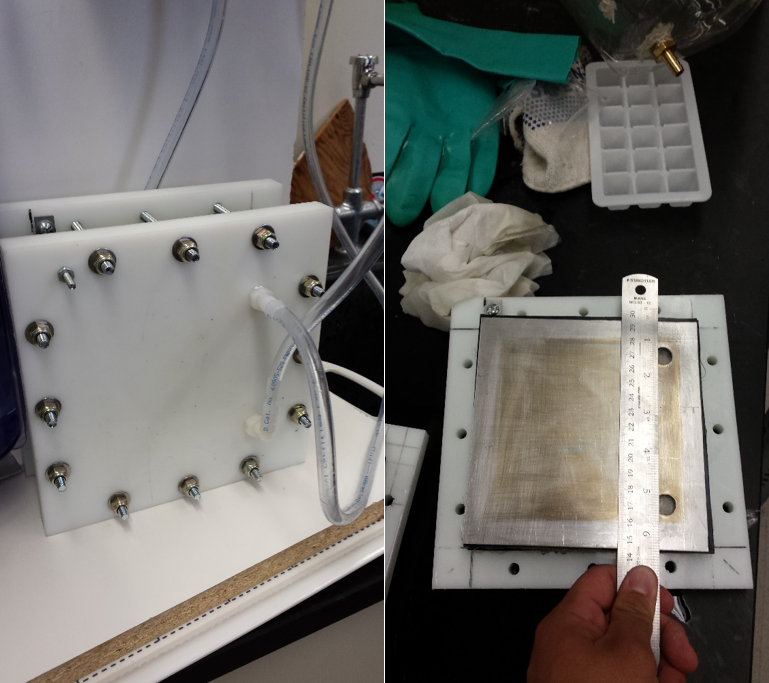The manufacturing and testing of the electrolyzer proved to be more problematic then we originally thought. We initially tried to fabricate a five plate design keeping in mind that surface area was our number one priority. We began the initial stages of system testing and quickly ran into design problems that we did not initially account for. Such Issues included neglecting water pressure and water level rising in the electrolyzer. Having the water reservoir over the Electrolyzer caused a pressure difference that forced out water when applying power. Also, we applied the right voltage but the water level was too high in the elecrolyzer that forced most of the water out. Our test station was fabricated with the intent of having an abundant amount of solution present at all times, but that was not necessary. Finally, the major flaw we found was that the electrolyzer was not separating hydrogen and oxygen. We initially believed that the polyester monofilament mesh was the membrane in charge of separating the gasses. We assumed there should be twice the amount of hydrogen being produced than oxygen. But when we ran the electrolyzer, we did not see such results. My team became exhausted trying to pin point the problem. We finally decided to inform Prof. Wang with our design problem and ask for guidance. He smiled at our problem and said “this an easy fix”. He started off by suggesting the reduction of our six plate set up to two plates and placing a plastic sheet to create a barrier for the air cambers. This quickly fixed our separation issue, and we saw hydrogen separating from oxygen. We were certain about the electrolyzer working because hydrogen volume was twice the as oxygen volume, which matches our theoretical results. The plastic we added should be below the water level so that as the plate is charged and gas is formed, the plastic sheet prevents hydrogen and oxygen from combining. With these modifications to our design, data now can be gathered.
By Danyal Khafajizad, Fuel Cell Battery

